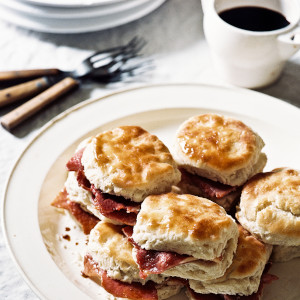“There were a few dishes Dad said not to mess with, and frankly, I messed with them all,” chef E.J. Lagasse told G&G last spring after officially taking over the kitchen at his famous father’s New Orleans flagship restaurant, Emeril’s.

Now, after a three-month closure for major renovations, Emeril’s will reopen October 24, and twenty-year-old E.J.’s stamp is even more apparent. Regulars can’t miss that the Tchoupitoulas Street space now accommodates fewer tables, a result of E.J.’s emphasis on the more intimate tasting-menu format he came to prefer while working in Michelin-starred restaurants in New York, London, and Stockholm. (Yes, he started quite young.) Also new? A floor-to-ceiling glass window that affords diners a view of all the action in the kitchen without all the pots-and-pans racket.
How much Emeril’s is balancing its beloved past with an aspirational future is apparent in the existence of two tasting menus, both consisting of seven courses. The Classics Tasting Menu ($185) is stacked with longtime Emeril’s favorites:
• Smoked salmon cheesecake topped with caviar
• Oyster stew
• Potato Alexa
• Barbecued Maine lobster gumbo
• Wagyu and daube glacé
• Snoball
• Banana cream pie

The Seasonal Tasting Menu ($165) is where E.J. is free to set his own course, which appears aimed toward applying modern gastronomy to local ingredients:
• Louisiana blue crab with crab royale
• Cauliflower and caviar
• Scorpion fish with corn and collard greens
• Georgia rabbit with Grand Isle shrimp
• White Sand Homestead Farm quail with risotto
• Snoball
• Autumn citrus with white chocolate
The obvious strategy, dear diner, is to share both menus with a tablemate. Preceding it all, E.J. has even tweaked Emeril’s bread service, from which he shares his own special cornbread recipe containing cane syrup and cake flour. Get the recipe, exclusive to G&G, below.









